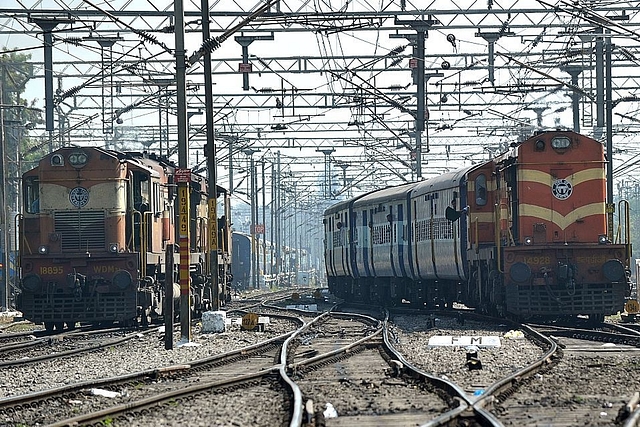
How Restructuring Can Turn Indian Railways Into The Engine Of India’s Ambitious Growth Journey
The future goals of the railways requires a workforce that is skilled, flexible and dynamic.
The revamping of organisational structure is a major step in a series of transformational shifts in the railways.
Indian Railways has many milestones to its credit as well as many challenges to contend with. Being the country’s largest employer and transporting more people than the population of many countries, Indian Railways has been hitting the mark on many fronts, but there have been many missed opportunities on the way as it failed to evolve with changing times.
Under Prime Minister Narendra Modi, every aspect of the railways has been under review and reform, in order to make it capable of becoming the engine that will transform the Indian economy.
Reforms have targeted the root cause of inefficiencies and have kept the needs of the poorest citizens as the parameter of progress.
From ending the colonial practice of a separate railway budget, the Modi government has now decided to restructure the organisational structure of the railways so that separate divisions function as one.
This restructuring from the Railway Board down to the divisions is aimed at bringing more efficiency, accountability and cohesion. An organisation like the railways that has common goals was unable to function as one team. It was plagued with internal conflicts, as it was divided into multiple divisions that did not collaborate but competed amongst each other.
Restructuring of the railways by the Modi government is a fulfilment of a long-standing demand of many stakeholders in the railways value chain, and researchers and analysts who could see the inefficiencies created by a workforce that was divided, unevenly distributed, and lacked the presence of experts for providing mentorship and inspiration to achieve bold targets.
Executing the Prime Minister’s ‘New India’ vision, the railways has been pushing for time-bound execution of past projects, and expanding the rail footprint to all unreached corners of India.
At a time when technology is enabling rail transport worldwide to become more efficient in its functioning and leaner in its structure, India cannot afford to suffer the ills of the past.
Be it the colonial structuring that was never designed for Indian needs, or the politicisation of railway projects that were announced and left hanging — these created a legacy of laggardness that has come upon the present government to turn around.
The restructuring of organisational structure is a major step in a series of transformational shifts in the railways. It will put a strong focus on collaboration among different skill-sets, and make achievement of the larger goals as the priority of every worker.
The Modi Government has sparked a new culture of synergies in administration, as different ministries have frequent collaborative interactions with each other to deliver on the promise of holistic growth.
For instance, the Commerce and Industry Ministry has the job of executing the National Logistics Policy, which is deeply interconnected with the railways and other transport ministries.
In such an ecosystem of collaboration, it is very important that within the railways the synergies between different teams are activated to the fullest potential.
The unification of existing eight ‘Group A’ services and the reorganisation of the Railway Board are steps that will help achieve these ambitions.
The Railway Board will have five members based on functional criteria, along with experts with over 30 years of experience in the at the top levels in industry, finance, economics and management fields.
If it were not for these reforms, the internal conflicts within the railways, for instance the matter of ‘which division will control diesel locomotives’, were needlessly stalling major modernisation and infrastructure creation with damaging consequences for the nation.
Structural unification of the world’s largest railway network will finally unleash the strengths of having such a vast infrastructure.
It will also bring in more accountability in the system, since earlier the same goals were distributed disparately among different divisions, and it was easy to shift responsibilities. The future goals of the railways, with an investment target of Rs 50 lakh crore over the next decade, requires a workforce that is skilled, flexible and dynamic.
Under the new structure, a united workforce mentored by the best minds in the nation will deliver a railways that can become the vehicle of India’s ambitious growth journey.